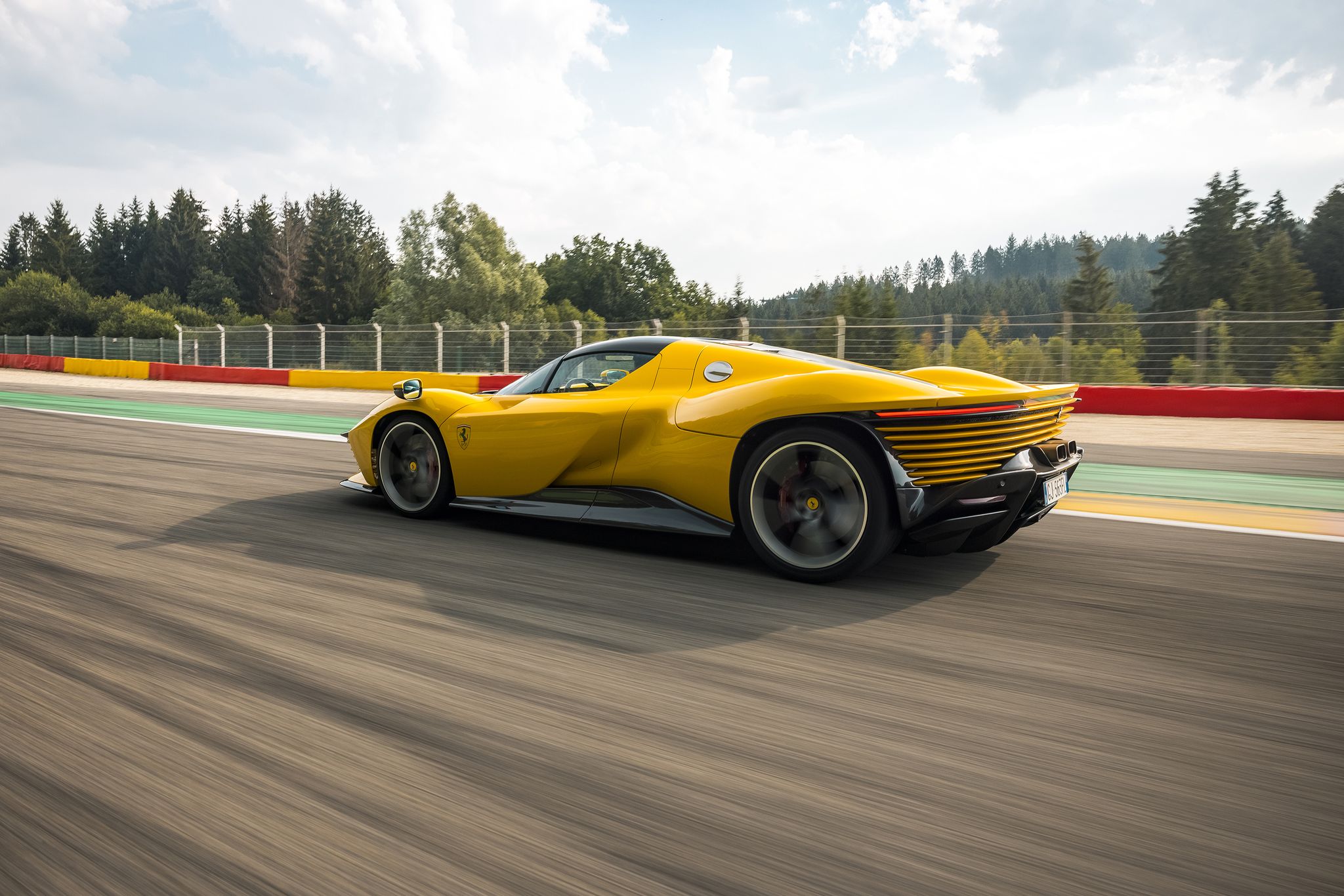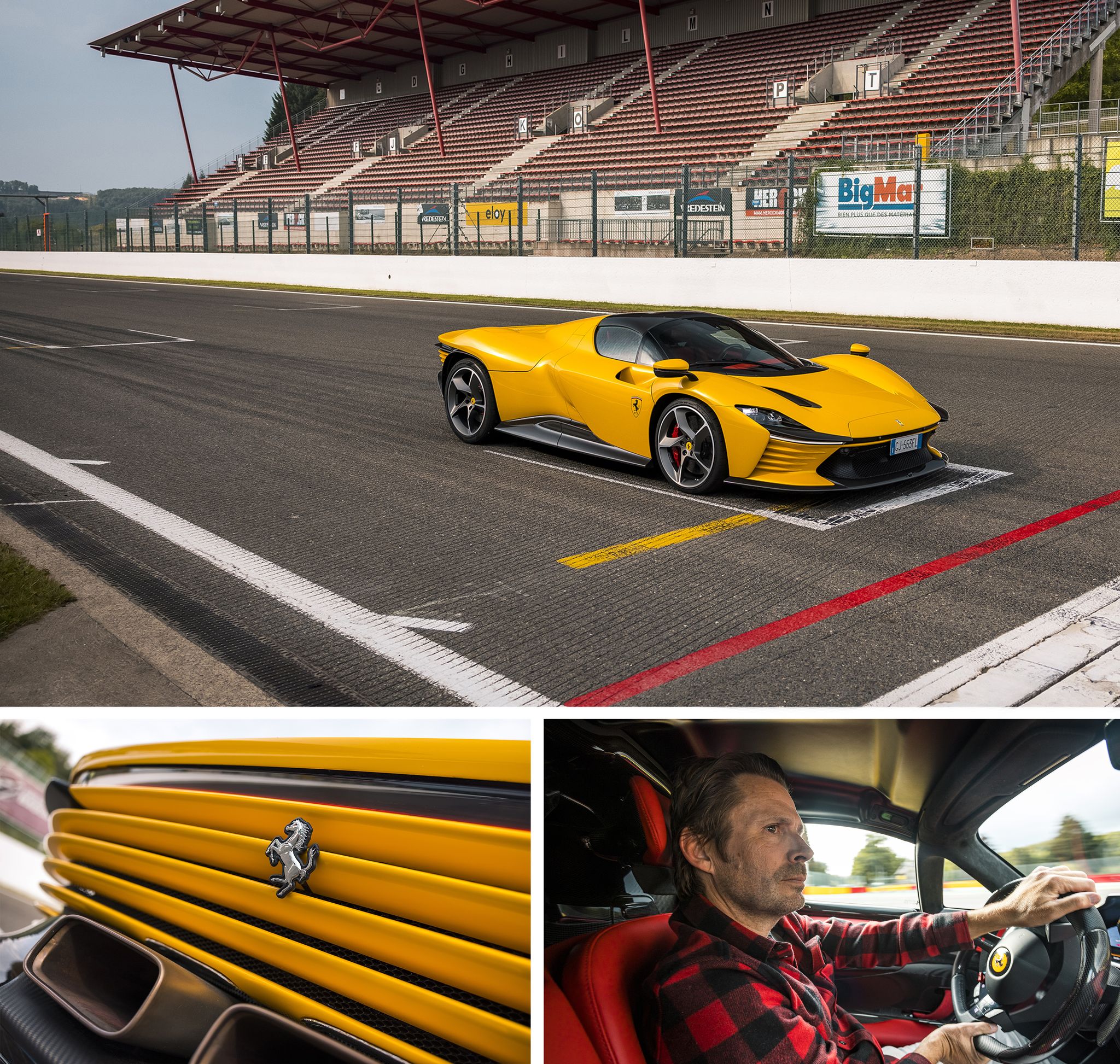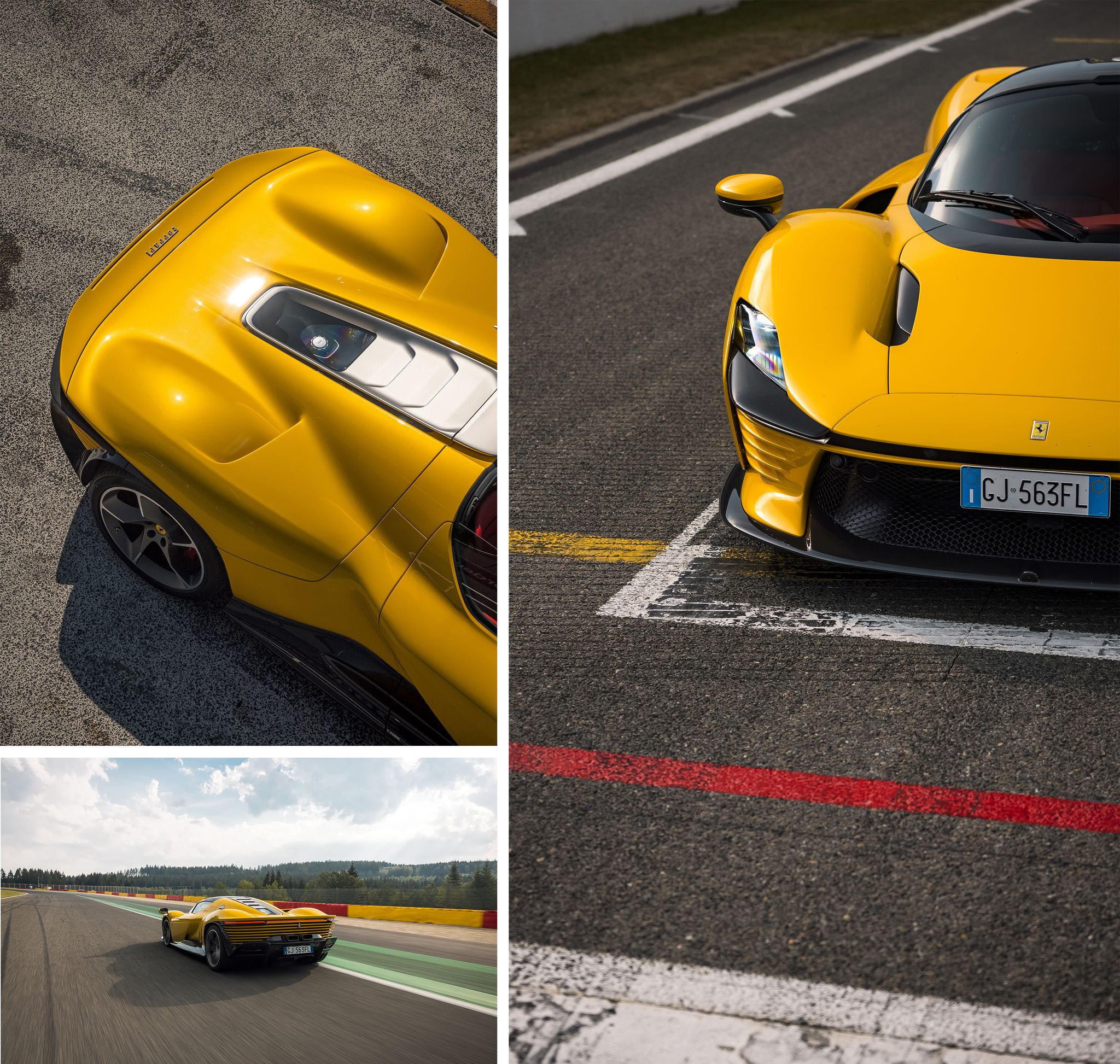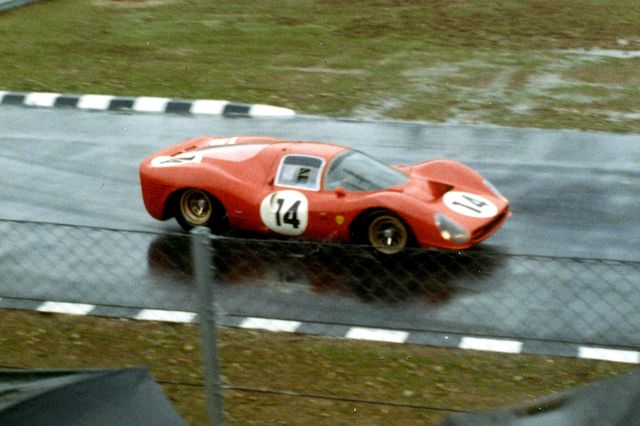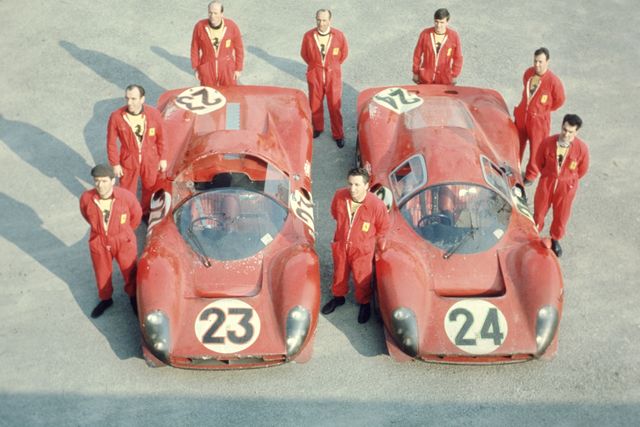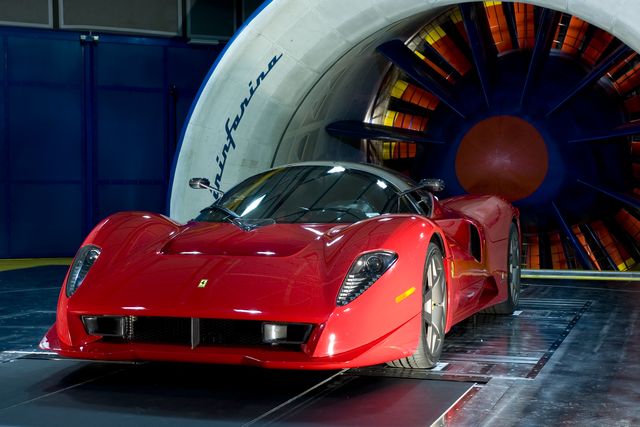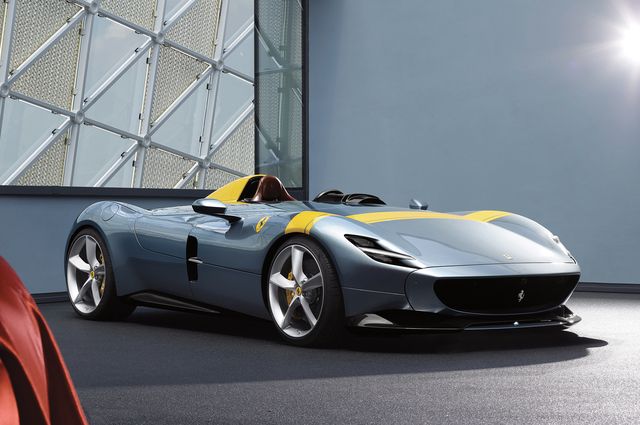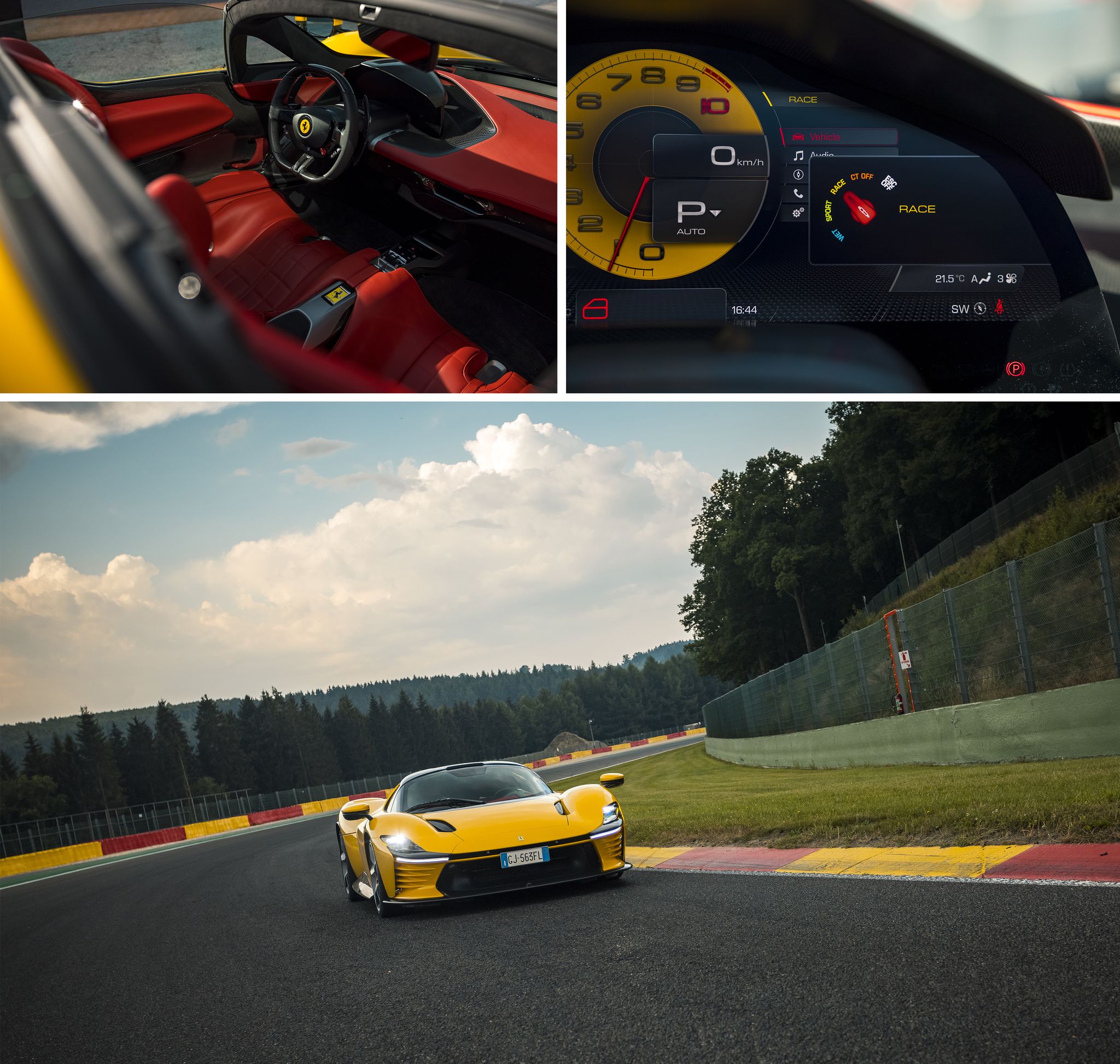Think of the Ferrari Daytona SP3 as a rock. Of course, it is not a rock. Nor does it share many of the characteristics of rocks. Though it is heavy by rock standards, at 3274 pounds dry, it is light by the standards of most modern sports cars. It is not craggy like a granite boulder, or ill-tempered yet lighthearted like Marvel Comics’ The Thing. But as he sits in the brutal Belgian heat, about 50 or so miles from Circuit de Spa-Francorchamps, the SP3’s senior designer, Jason Furtado, keeps insisting the Daytona SP3’s exterior is inspired by a particular sasso. That means stone in Italian. In this instance, a sleek one used for skipping across water.
This story originally appeared in Volume 13 of Road & Track.
It’s a weird comparison, but it makes sense. “I think about the SP3 as a car with many layers,” explains Furtado, who worked for three years under Ferrari chief designer Flavio Manzoni to mold the lines of this $2.3 million stunner. There are layers to the car itself, much like the strata in sedimentary rocks. It is functional—the worn edges make a skipping stone hydrodynamic and a car aerodynamic. It has a subtlety to it—on the SP3 there are no wing elements and very little ostentation beyond overwhelming, knee-buckling physical presence.
“The best Ferrari designs have just two lines,” Furtado says. “A straight one and a curve that runs along it. This is the best Ferrari design.”
There are other layers to the SP3: the engineering, the performance, and, crucially, its place in history. The Daytona is part of the limited-edition Icona series of throwbacks to cars that so far includes just the Monza SP1 and SP2, curious modern machines without windshields that pay homage to the 250 Testa Rossa, the 166 MM, and the 750 Monza. The SP1 is so dead set on reproducing that original feel that it offers only one seat. The SP2, tossing aside heritage with almost malevolent disregard, adds a second. Neither fully modern nor overtly retro in design, the Icona cars are probably best thought of as concept cars for the road (this even though neither of the Monzas is street-legal in the U.S.).
The SP3 feels informed by but not beholden to nostalgia. In fact, Furtado bridles at the very concept of nostalgia. “In the original Greek, the second half of that word means ‘pain.’” But it does use every modern piece of engineering and design magic to elicit a very specific moment in history, from which it derives its name: Daytona.
And that moment is the afternoon of February 6, 1967. On that day, Ferrari pulled off what Enzo himself considered the most spectacular feat in company history when it took primo, secondo, and terzo at the 24 Hours of Daytona. It was the first round of that year’s International World Sports Car Championship and the middle of a very personal battle with Henry Ford II, who had earlier offended Enzo by offering to buy his company and who instead began developing the Ford GT to vanquish the prickly Italian where it would hurt him the most: on the racetrack.
On that winter day in Florida, on Ford’s turf, the three Ferraris finished in this order: two factory team prototypes, the 330 P3/4 and the 330 P4, and the factory-built customer car, the 412 P. It was a pinnacle of then-chief engineer Mauro Forghieri’s homing in on the three racing-car fundamentals: engine, chassis, and aerodynamics.
So that’s the heritage the Daytona SP3 honors. No pressure.
What Ferrari did to reimagine those perfect prototype racers is stick to Forghieri’s fundamentals: engine, chassis, and aero.
Start with that engine: the monster V-12. In its modern era, you can count on a cartoon hand how many times Ferrari has placed a naturally aspirated V-12 in a mid-engine configuration. There was the F50, a mid-Nineties air-breathing successor to the turbocharged F40. A handful were built—fewer than 60 came to the U.S. A few years later, the Ferrari Enzo appeared and sent shivers of excitement down everyone’s spine. Brash, F1-inspired, prickling with (for staid Ferrari) newfangled tech and active aerodynamics, the Enzo introduced the now legendary F140 V-12 that’s still in use today. Finally, there’s the unfortunately named LaFerrari, which mated that F140 to an electric motor and a KERS energy-recapture system. In 2013, when the LaFerrari was introduced, KERS was all the rage in Formula 1.
In the engine bay of the SP3, that same durable F140 base has grown from the 6.0-liter in the Enzo into a 6.5-liter screaming behemoth. Based on the powerplant in the front-engine 812 Competizione, the SP3’s V-12 is radically upgraded with new materials. The piston pins, cams, connecting rods, and valves are all made of titanium and treated to reduce even the slightest amount of friction (friction equals inefficiency equals less perfetto). All the modifications align to produce an immodest 829 hp. To date, this F140 is Ferrari’s most powerful combustion engine ever to fire on a public road.
And that just happens to be where I’m heading. In the parking lot of a castle in the modest hills along the Dutch-Belgian border, I take in the design.
It is monumental, with pronounced front wheel arches and a long tail that gives it that Sixties prototype feel and exaggerates how far forward the passenger compartment appears to be placed. The windshield wraps around the driver (there is no traditional A-pillar). The targa roof is removable (though not storable on the car), and the delicate, round-edged strakes that run horizontally across the tail hark back to the iconic Eighties Testarossa, as well as Pininfarina’s more obscure 1968 250 P5 Berlinetta Speciale concept. Radiators are nestled on either side behind the doors for cooling the clutch, gearbox, and engine oil. The closer I look at the car, the more I notice how closely the elegance of the design is married to the extraordinary aerodynamic scheme that keeps the Pirellis tight to the road and attends to the massive cooling needs of the notoriously hot V-12.
When the car is in motion, a channel of air passes over the front wheel arch, down through an intake in the door, then out through the rear strakes. A full-width rear spoiler works with a diffuser beneath, and inside the diffuser are two channels: one coming from the doors and another that expels heated air from the engine compartment. It’s an ingenious system that solves a mind-melting set of challenges that generations of confounded engineers have drooled over.
Opening the SP3’s door, I can see the aero tunnel passing through the panel. The carbon-fiber monocoque tub (of course, basically everything on the car is carbon fiber) appears in sharp relief against the gravel car park.
The visual experience of this car is striking from every angle. Form serves function, and there is no adornment that isn’t somehow integrated into the car’s performance. The sideview mirrors are mounted atop gossamer wings that reach far from the wheel arches, which both makes them visible to the driver and keeps them from disrupting the airflow. There is no detail on this car that isn’t objectively attractive. I believe the word Furtado used was “voluptuous.” That works too.
Inside, I strap in and soak up the view. I’ve only sat in a couple actual prototype race cars—when they’re parked on concours golf courses—but the feeling of sitting in one is so overwhelming I almost feel under it. The car is ever-present around me, and when driving, the effect is to slingshot me forward (the wheel arches are the ends of the slingshot, and I’m the sasso). Each mirror is placed perfectly. The slingshot arches nearly obscure the road. The same digital dashboard and user interface are found in the SF90 Stradale. Seats are integrated into the body, and driving-position adjustment comes via a movable pedal box. The way the fabric for both sides links over the center tunnel is another nod to how the Sixties sports racers were outfitted.
But my attention is front and center. I fire up the engine. The V-12 a few inches behind my seat rumbles, and as I turn gently onto the first of many winding country roads, the sound of the engine’s prodigious intake fills the cockpit. The engine manifold and direct-injection system are radically evolved over the 812’s F140, and the four valves per cylinder open and close using sliding-finger followers developed in Ferrari’s F1 power unit. It’s all meant to make the engine lighter and produce more power. There are no turbos to muddy the beautiful noise. When I find a long straight stretch, I fire through the seven-speed dual-clutch gearbox and reach that Everest of 9500 rpm. The intake noise is overwhelming; the car is glued to the ground in each corner. The sense of going fast is replaced by a comic-book feeling of speed. It’s almost funny.
Only a handful (599, to be precise) of the most well-behaved and well-heeled Ferrari customers were invited to own this car, and every one has been sold. It’s probably for the best, since I’m not sure anyone other than the most dedicated Ferrari fiend should be trusted with this lovely creature. Just remember: It’s not a rock, but a sasso.
